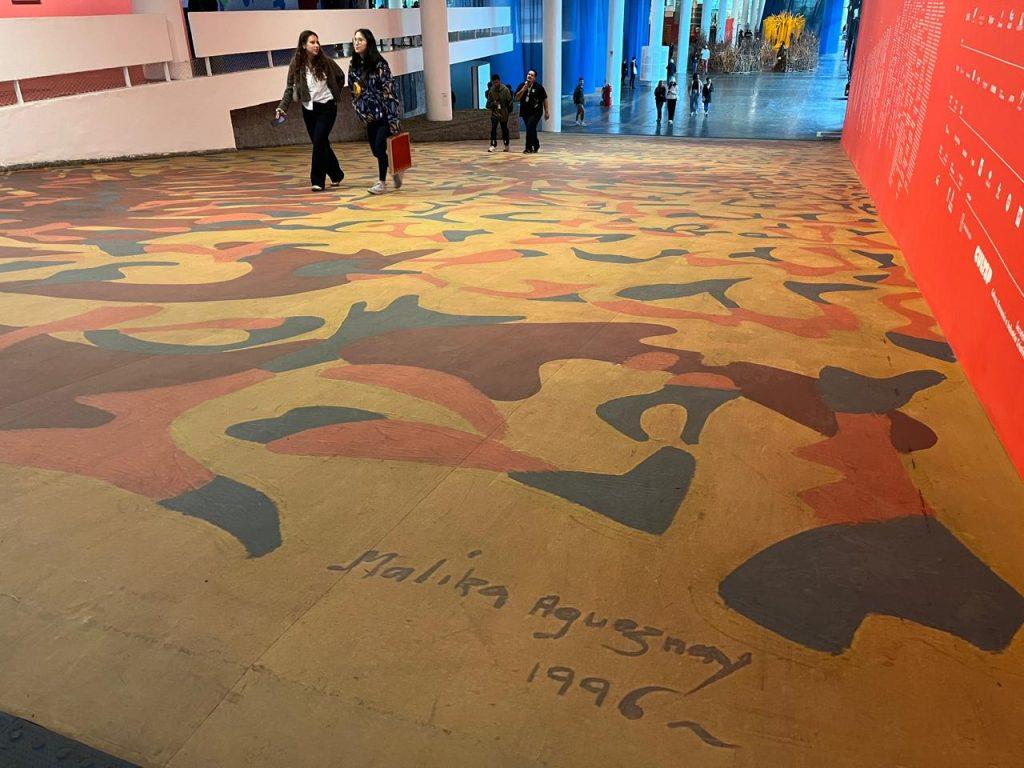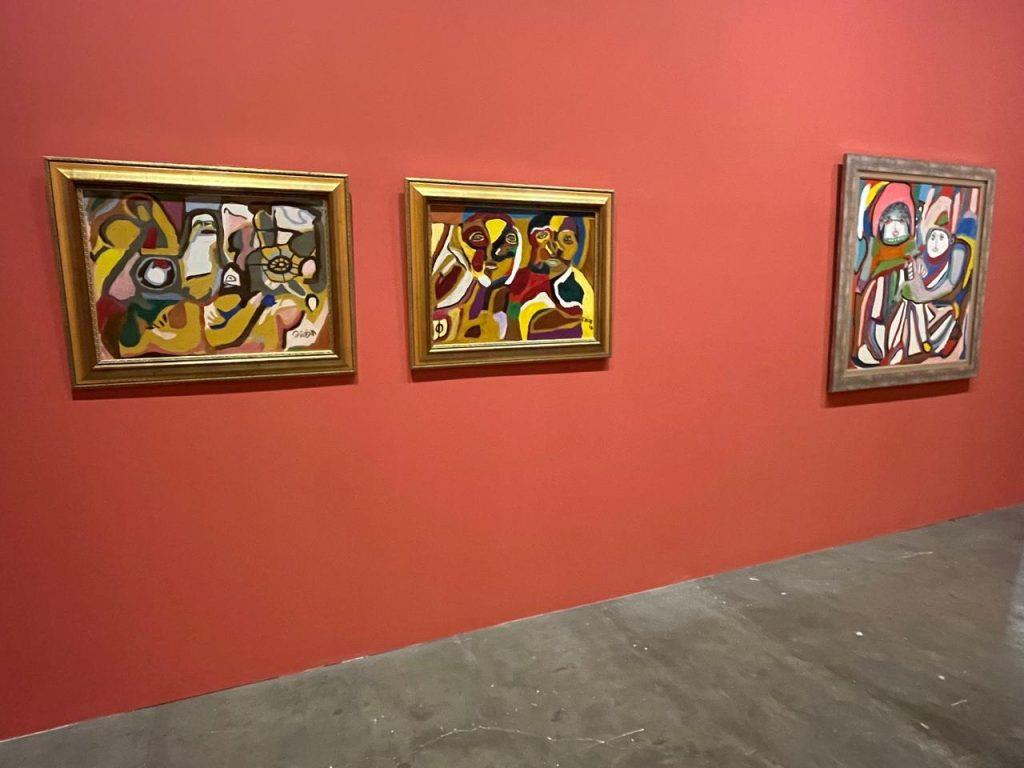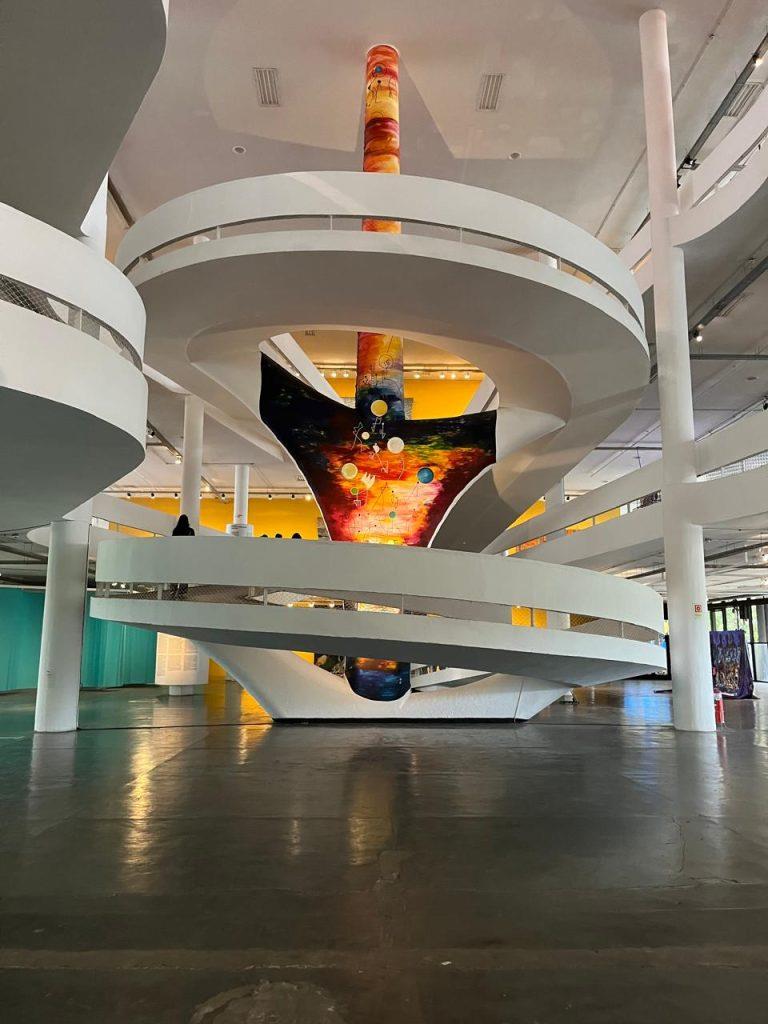Arab Art Shines At São Paulo Biennial

São Paulo Biennial explores art in every space: The exhibition pavilion's ramp is designed by Moroccan artist Malika Agueznay
Moroccans Chaibia Talal (1929–2004), Farid Belkhaia (1934–2014), and Mohamed Melehi (1936–2020), whose works are featured in the exhibition, represent a movement considered post-colonial or decolonial in the North African country. Their abstract art questioned preconceived values and ideas shaped by the art of European colonizers in African countries.
Chaibia Talal, in particular, faced scrutiny for being a woman. She married an older man at 13, had a child shortly after, and was widowed by 15. She began painting at 25, but it wasn't until she was 37 that her work gained recognition beyond Morocco, with the support of Melehi and Belkhaia, who championed her art and techniques. Her paintings depict images of children and women, but not in a conventional way: Talal, like her contemporaries also featured in the Biennial, worked within abstraction.
Contemporary to these artists, Moroccan Malika Agueznay also contributes works to the Biennial. One of them, the painting Le paradis sous les pas des mères (“The Paradise Under the Feet of Mothers”), adorns the ramp leading to the building's first floor. There, her reinterpretation of natural elements-a hallmark of her work-comes to life on a large scale. In another area of the pavilion, nine paintings echo the artistic concept of her oeuvre. The same phrase,“The Paradise Under the Feet of Mothers,” reappears, this time written in Arabic.

Chaibia Talal: Moroccan artist part of post-colonial movement in paintings exploring abstraction
Another Arab artist featured in the Biennial, Hamedine Kane was born in Nouakchott, Mauritania, and lives between Paris, France, Brussels, Belgium, and Dakar, Senegal. The Senegalese city served as one of the inspirations for Le Ressources: Acte-#2 (“Resources: Act #2”). On a pier-like structure, books, ropes, pieces of wood, and other materials were placed, referencing objects found at sea along both the Senegalese and Brazilian coasts-two extremes of the South Atlantic Ocean. The installation is the result of an investigation into maritime exploitation and pollution, whose first act took place in Senegal. This stage of the work was developed in São Paulo and Salvador in collaboration with his partner Boris Raux.
Sudan is also represented at the Biennial, with paintings by Kamala Ibrahim Ishag. Although her works are related to each other, they are displayed across two separate spaces in the pavilion. The mysticism of African rituals, the condition of women in society, and communal spaces-often associated with the feminine-are central themes of the projects exhibited, such as the painting Faces, in which people's faces are distorted using a technique reminiscent of surrealism.

The Biennial pavilion houses most of the works, which are also displayed at other locations featured in the program
In the installation La valise oubliée (“The Forgotten Suitcase”), Algerian French artist Kader Attia leads Biennial visitors into a dark room containing three suitcases filled with shards of mirror that reflect light across them. Each suitcase, for the artist, tells a personal story. In another space, viewers can watch a video showing documents, family photos, and memories that revisit the Algerian War (1954–1962), blending personal history with that of his country.
The Arab presence at the São Paulo Biennial is also evident in other installations, paintings, and compositions-in the textiles of Franco-Algerian Hamid Zénati (1944–2022) and Amina Agueznay, and in the video installation by Palestinian artist Noor Abed, among others. The Biennial follows the curatorial concept of Bonaventure Soh Bejeng Ndikung, alongside curators Anna Roberta Goetz, Thiago de Paula Souza, and Moroccan Alya Sebti, as well as curator-at-large Keyna Eleison and communications consultant Henriette Gallus. In addition to the pavilion in the Ibirapuera Park, other locations are included in the Biennial's program, which offers free admission.
More information and the schedule are available here .
Read more:
Moroccan artists, co-curator at São Paulo Biennial
Translated by Guilherme Miranda
Marcos Carrieri/ANBAMarcos Carrieri/ANBAMarcos Carrieri/ANBAMarcos Carrieri/ANBAThe post Arab art shines at São Paulo Biennial appeared first on ANBA News Agency .
.jpg)
Legal Disclaimer:
MENAFN provides the
information “as is” without warranty of any kind. We do not accept
any responsibility or liability for the accuracy, content, images,
videos, licenses, completeness, legality, or reliability of the information
contained in this article. If you have any complaints or copyright
issues related to this article, kindly contact the provider above.
Most popular stories
Market Research

- Alt.Town Introduces $TOWN Token Utility Across Platform Services And Launches Valuefi Deposit Event
- BTCC Exchange Maintains 143% Total Reserve Ratio In September 2025 Demonstrating Continued Financial Strength
- Salvium Solves The Privacy Paradox: Salvium One Delivers Mica-Compliant Privacy That Exchanges Can List
- Zebu Live 2025 Welcomes Coinbase, Solana, And Other Leaders Together For UK's Biggest Web3 Summit
- Tapbit At TOKEN2049: Reshaping The Crypto Landscape Through Product Innovation
- Thrivestate Launches“Fly Before You Buy” Program, Enabling International Buyers To Explore Dubai Before Committing





















Comments
No comment